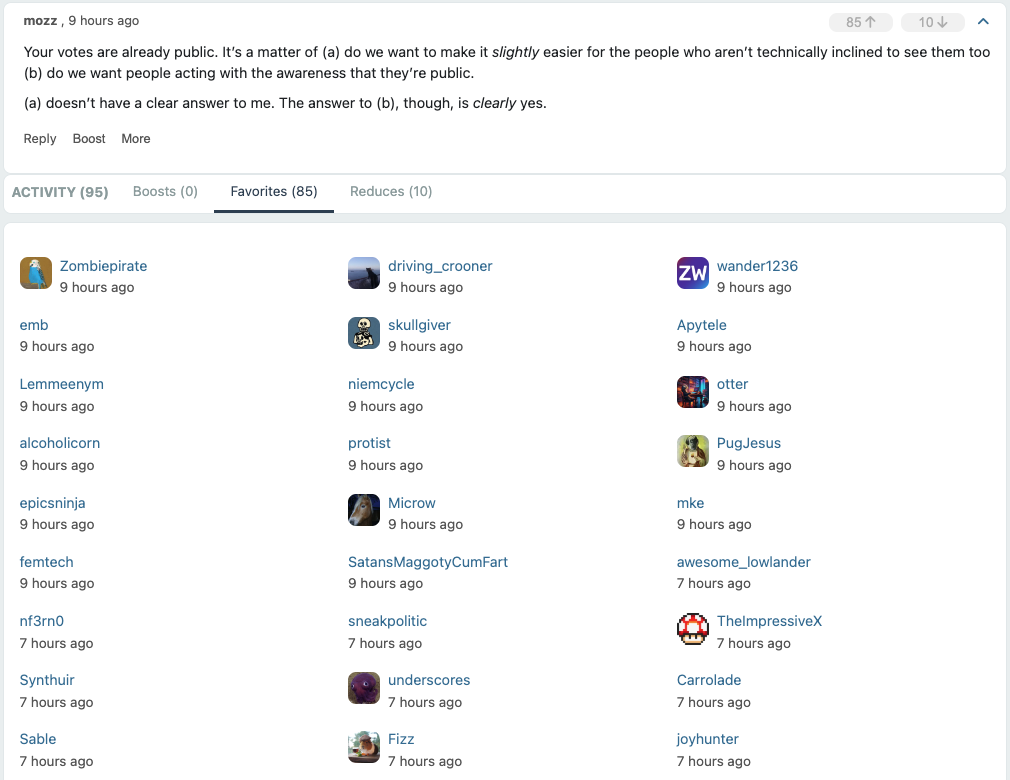

I’m dabbling in Bluesky atm. Having run my own Masto server for over a year at this point. Here’s things I’ve found that Bluesky does just plain better - mostly cause it’s not beholden to the whims of the ActivityPub protocol.
- Shows me all replies to any post I happen to come across.
- Lets me see all posts about things I happen to search/look for, including hashtags.
- I don’t have to worry about being unable to see content I haven’t personally blocked (not so much of an issue on a small/single server like mine though).
- I can repost things (not actually too bothered with this one but many people want it).
- I can set per post reply permissions to a very granular level (no-one, mentioned, followers, specific followers)
- It handles video in a way that works i.e. I can post them, and people can watch them with minimal buffering/waiting.
- Gives me access to community built collections/algorithms that expose the content I want to see.
- It defaults to providing an additional feed driven by what the people I’m following are liking/interacting with.
- Finally, a big one for new users, it provided a default feed of content when I first logged in so that I had something to look at.
The first two are huge on a small/single user server. By default we get nothing, following a single account will get us the content of just that account and the replies that they happen to reply to. A post may get 200 replies, but unless I go looking on the original server I will see a fraction of that. Technical solutions exist to help with this but the Fediverse’s penchant for privacy and control (quite rightly) limits the effectiveness (Fedifetcher, GetMoarFedi).
3 is something most people won’t think about. But if they become aware they’re not seeing something they thought they’d be able to they then have to deep dive into who’s defederating who and why.
Most all the other points just make the whole thing a much more seamless experience for your average user. Bootstrapping a list of people to follow on a small server is hard (I’d absolutely recommend creating a Fediverse account somewhere large first to build up some sort of list before migrating)





Given the topic, the response and the location I’m going to go with “because it seems neat and could be fun”.
Now, since I now know if it I’m going to give it a crack. 😆